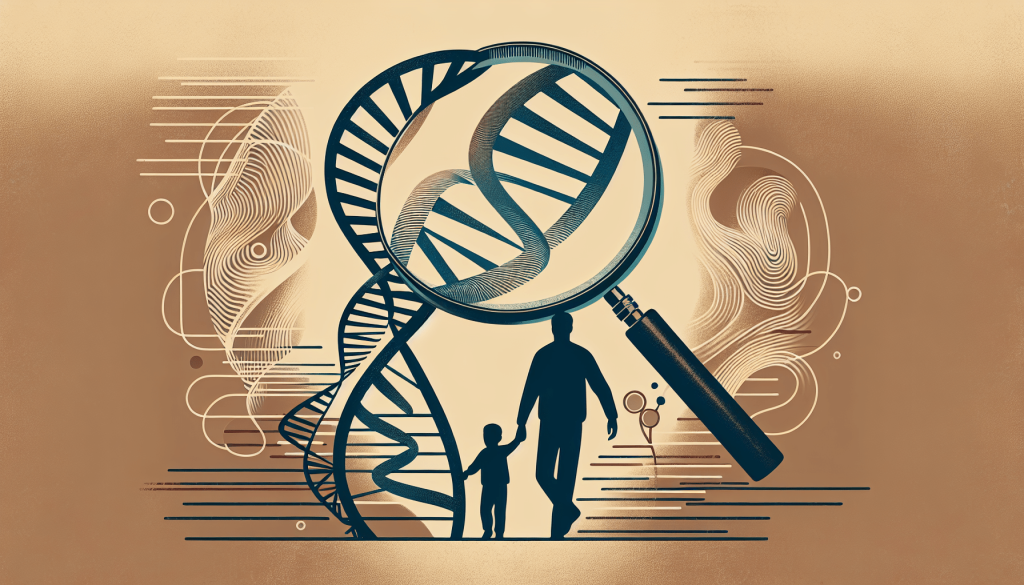Welcome to “Can Paternity DNA Test Be Wrong?” Navigating the complexities of paternity testing can be overwhelming, but understanding the potential for errors is crucial. In this article, you’ll discover the factors that can lead to inaccuracies in paternity DNA testing, from sample contamination to lab errors. You’ll gain insight into how these tests work, the importance of proper procedures, and what steps you can take to ensure the most reliable results. Unlock the knowledge you need to make informed decisions and approach paternity testing with confidence. Have you ever wondered, “Can a paternity DNA test be wrong?” If so, you’re not alone. Many people rely on these tests to provide definitive answers, but the reality is more complex than it seems. While DNA tests are generally accurate, there are instances where errors can occur. In this article, we’ll explore the different factors that can affect the accuracy of a paternity DNA test and how you can avoid potential pitfalls.

What is a Paternity DNA Test?
To better understand how a paternity DNA test can be wrong, it’s crucial first to understand what it is and how it works. A paternity DNA test is designed to determine whether a particular individual is the biological father of a child. This is usually done by comparing genetic markers between the two people involved.
How Does It Work?
The process generally involves collecting DNA samples from both the child and the potential father. These samples are then analyzed in a laboratory to compare specific markers in their genetic code. If the markers match to a significant degree, the test will indicate that the man is the biological father.
Types of Paternity DNA Tests
There are several types of paternity DNA tests available, each with its unique features and applications:
| Test Type | Description |
|---|---|
| At-Home Test | Uses a cheek swab to collect DNA samples. Generally less reliable, but convenient. |
| Legal DNA Test | Conducted in a certified lab with chain-of-custody procedures to ensure sample integrity. |
| Prenatal DNA Test | Determines paternity before the child is born, either through non-invasive or invasive methods. |
Understanding these different types of tests helps contextualize potential sources of error.
Can a Paternity DNA Test Be Wrong?
While DNA testing is generally considered highly accurate, various factors can contribute to erroneous results. Let’s break these down.
Human Error
Human error is perhaps the most common reason for inaccuracies in paternity DNA tests. Errors can occur during sample collection, labeling, or even in the lab during analysis.
Sample Collection
If the DNA samples are not collected correctly, the entire test can be compromised. For example, if a cheek swab is used, it’s crucial that the swab is thoroughly rubbed against the inside of the cheek to collect enough DNA material. Failing to do so can result in an inconclusive or incorrect result.
Sample Labeling
Mistakes in labeling the samples can lead to major errors. If samples are mislabeled, the wrong DNA can be compared, leading to incorrect conclusions about paternity.
Lab Analysis
Even in the lab, mistakes can occur. While rare, errors in handling or analyzing the DNA can lead to incorrect results. Multiple tests and quality control measures are generally in place to minimize these risks.
Contamination
Another significant factor that can affect the accuracy of a paternity DNA test is contamination. If the sample is contaminated with foreign DNA, the result can be skewed.
| Contamination Source | How it Affects the Test |
|---|---|
| Handling Contamination | Samples handled by multiple people without proper precautions can be contaminated. |
| Environmental Contamination | Exposure to contaminants such as bacteria, chemicals, or even other people’s DNA can affect the results. |
Maintaining a sterile environment during sample collection and transportation is crucial to ensuring accurate results.
Genetic Mutations
Genetic mutations can also play a role in causing a paternity test result to be inaccurate. While rare, mutations can occur in the DNA that may result in non-matching markers between the child and potential father.
Siblings and Close Relatives
One often-overlooked factor is the genetic similarity among siblings and other close relatives. If two potential fathers are brothers, or otherwise closely related, their DNA may be similar enough to confuse the test results.
Legal and Consent Issues
Paternity tests used for legal purposes must adhere to strict chain-of-custody procedures to ensure the integrity of the samples. Any deviations from these procedures can result in a court not accepting the test results. Additionally, obtaining the proper consent from all parties involved is crucial. Testing without consent may lead to legal ramifications and results being thrown out.
How to Minimize Errors
While the factors mentioned can affect the accuracy of a paternity DNA test, there are ways to minimize these risks.
Choosing the Right Test
Selecting the right type of paternity test for your specific needs is crucial. If you require legal proof of paternity, opt for a legal DNA test conducted by a certified laboratory. For more casual inquiries, an at-home test may suffice, but be aware of its limitations.
Proper Sample Collection
Proper sample collection is essential. Follow the instructions provided meticulously to avoid contaminating or inadequately collecting the DNA samples.
Using Accredited Labs
Always ensure that your samples are analyzed by an accredited laboratory. Accredited labs follow stringent protocols and multiple checks to ensure the accuracy and reliability of the results.
Double-Checking Results
If the results are critical, it might be worth getting a second opinion. Conducting the test at another accredited lab can help verify the initial results.
Case Studies: When Paternity DNA Tests Went Wrong
Sometimes, the best way to understand the potential for error is through real-world examples. Here are some cases where paternity DNA tests provided incorrect results and the lessons learned from them.
Case 1: Mislabeling Samples
In one famous case, a man was wrongly identified as the father of a child due to mislabeled samples. After legal battles and additional testing, it was discovered that the samples had been switched during the handling process. This case underscores the importance of meticulous sample labeling.
Case 2: Close Relatives
Another case involved two brothers who were both potential fathers. The initial test results were confusing due to the genetic similarities between the siblings. It took further tests and a more in-depth analysis to determine the true biological father. This situation highlights the need for careful consideration when potential fathers are closely related.
Case 3: Contamination
In another instance, the DNA samples were contaminated due to improper handling. Environmental contaminants had altered the DNA, resulting in incorrect test results. Following strict procedures for sample collection and maintaining a sterile environment could have prevented this error.

Frequently Asked Questions (FAQs)
To wrap up, let’s address some commonly asked questions about paternity DNA tests and their accuracy.
Can a Paternity DNA Test Be 100% Accurate?
While paternity DNA tests are highly accurate, claiming 100% accuracy is misleading. The tests typically provide a probability of paternity rather than absolute certainty. Accredited labs usually offer results with 99.9% accuracy, depending on the number of markers tested.
How Long Do Results Take?
The time it takes to get results can vary depending on the type of test and the laboratory processing them. Generally, at-home tests can take a few days to a week, while legal tests may take longer due to additional steps in ensuring chain-of-custody and consent.
Can Eating or Drinking Affect the Sample?
Yes, consuming food or beverages before taking a cheek swab can potentially contaminate the sample. It’s usually recommended to refrain from eating or drinking anything besides water for at least 30 minutes before collecting the sample.
Are There Any Risks Involved in Prenatal DNA Tests?
While non-invasive prenatal paternity tests (using a blood sample from the mother) are generally safe, invasive methods (like amniocentesis) come with risks such as miscarriage. Always consult a medical professional before opting for prenatal testing.
What Should I Do If I Get an Unexpected Result?
If you receive unexpected results, consider retesting through another accredited lab. Mislabeling, contamination, and human error can all contribute to incorrect results. Verifying through multiple sources ensures the reliability of the conclusion.
Conclusion
While paternity DNA tests are a powerful tool for determining biological relationships, they are not infallible. Factors such as human error, contamination, genetic mutations, and close genetic relationships can lead to incorrect results. By being aware of these potential pitfalls and taking steps to minimize them, you can significantly improve the accuracy and reliability of your paternity test results. Remember, when in doubt, seeking a second opinion from another accredited lab can provide the peace of mind you’re looking for.
So, the next time someone asks you, “Can a paternity DNA test be wrong?” you’ll be well-equipped with the knowledge to give a comprehensive answer.
